An Unforgettable Painting in the Louvre


Of the thousands of paintings in the Louvre, how many can be described as unforgettable? One which surely can is Gabrielle d’Estrées and One of Her Sisters. Two perfectly coiffed young women stand waist-deep in a bath, naked except for their jewelry, and stare perkily out at us, framed by rich deep red drapes, almost as if they were on stage. One sister is reaching over, quite deliberately, to pinch the nipple of the other. It is definitely a case of once seen, never forgotten.
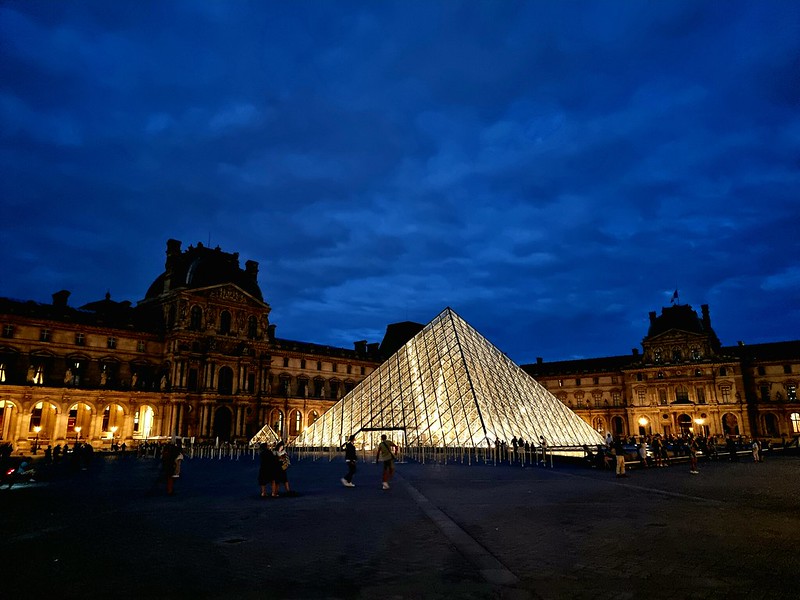
The Louvre in summer. Photo credit: Drew de F Fawkes/ Flickr
It is not known who painted this late 16th-century portrait of Gabrielle d’Estrées, aged 20 or 21, and her sister the Duchesse de Villars. In the picture there are at least two strong indications of a story which had all Paris talking, namely that Gabrielle was pregnant. The nipple gesture indicates that a baby is due, and the older lady in the background is busy sewing, very possibly preparing baby clothes. And the gossip angle? Gabrielle was the mistress of King Henri IV and this would be his child. The ring Gabrielle is wearing is thought to be Henri’s coronation ring, given to her as a token of his love.

Official portrait of Henry IV, King of France, by Frans Pourbus the Younger, 1613
The story behind this painting is colorful and, ultimately, tragic. Gabrielle was one of 11 children, born into a well-to-do family: her father was a Marquis and her mother had been a lady in waiting to Mary Queen of Scots at the French court. She and her six sisters were well known at court, indeed infamous, and were once referred to by the gossipy diarist Madame de Sévigné as “the Seven Deadly Sins.” It is a sad truth, reflective of their time, that these young women probably saw the role of courtesan as the most likely way for them to assure their futures.
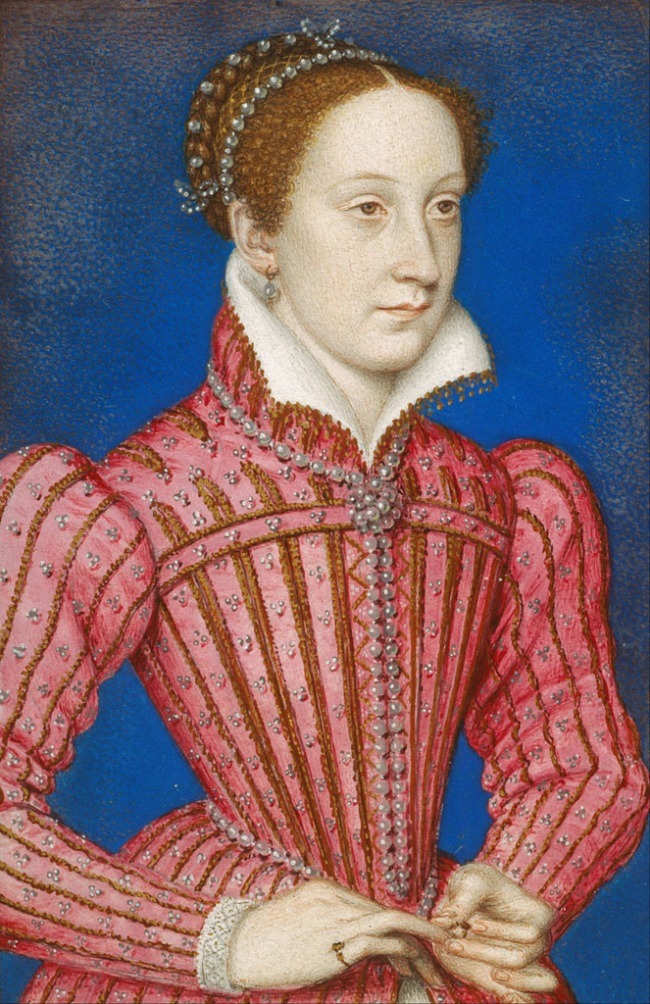
Mary, Queen of Scots. Painted by François Clouet. Wikimedia Commons
In about 1590, when Gabrielle was 17, she met Henri de Navarre, later to be Henri IV, and he fell madly in love with her. He was 37, and although married to Marguerite de Valois, he was soon totally besotted with “la belle Gabrielle.” Her father, fearful that this was dangerous, arranged for her to marry the much older Seigneur de Liancourt, but it was not long until Gabrielle had abandoned him to join Henri on his campaigns. Soon, in addition to being his mistress, she was looking after his domestic needs, handling his correspondence and proving her worth as an adviser. Whenever they were apart, Henri would write her long and passionate letters, telling her: “You have bewitched me – I admit it – more than I have ever been before.”
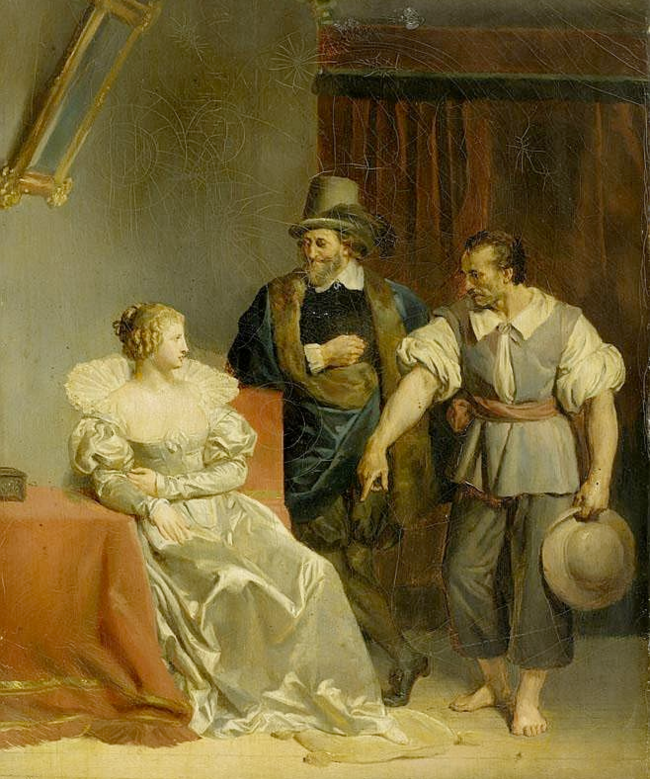
Henri IV et Gabrielle d’Estrées. Unknown artist. Private collection, Switzerland. Wikimedia Commons
The year 1594 was a crucial one for them. Henri busied himself trying to undo the marriages which were preventing their legal union, pleading with the pope for an annulment of his marriage to Marguerite and provoking a court case designed to end Gabrielle’s marriage. In February that year he was crowned at Chartres and in June Gabrielle gave birth to their first son, whom they named César de Bourbon, in full recognition that Henri was his father.
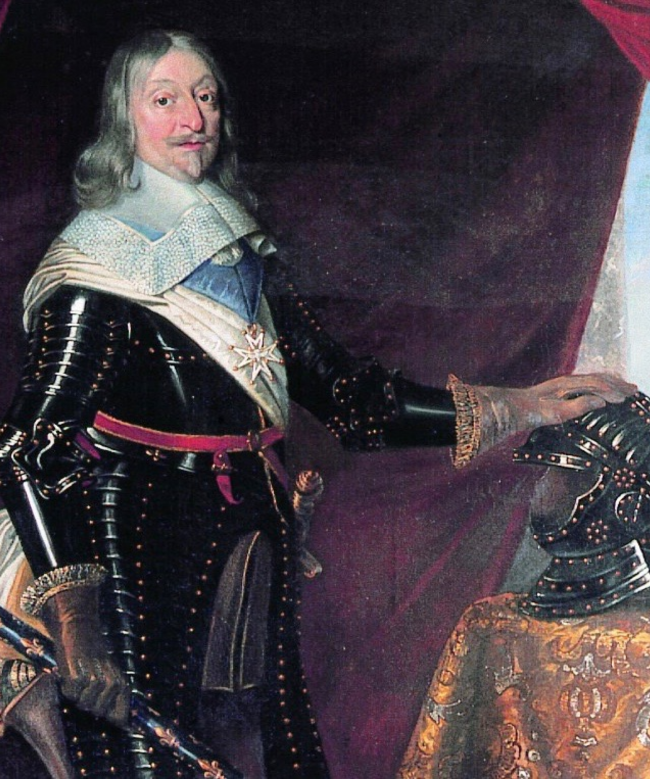
César de Bourbon, Duc de Vendôme. Unknown artist. Wikimedia Commons.
Henri’s insistence on a public role for Gabrielle as his mistress was further underlined in September that year when he rode through Paris at the head of a torchlight procession, accompanied by Gabrielle, resplendent atop a magnificent litter and dressed in black satin and sparkling gems. Their destination was Notre-Dame, where, along with members of the parlement, they heard a Te Deum, a song of rejoicing and celebration. Gabrielle’s first public appearance sent a powerful message to all: Henri regarded her presence in his life as non-negotiable.
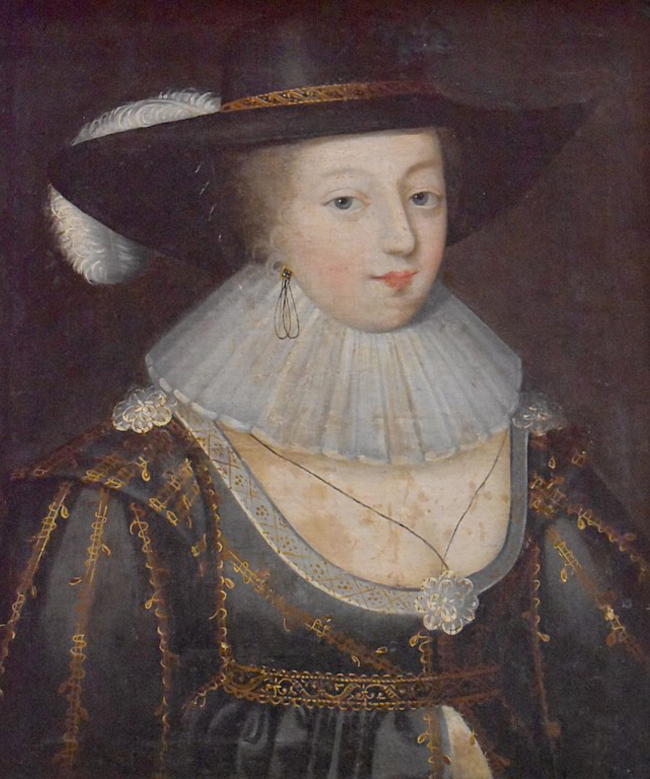
Portrait presumed of Gabrielle d’Estrées. Musée Massey. Public domain.
In early 1595, Henri went further. The Parlement de Paris was asked to validate a text in which he officially legitimized little César as his son and described Gabrielle as “the subject the most worthy of our friendship.” Gabrielle was now officially “the titular mistress of His Majesty the King of France” and she was given a suite of rooms at the Louvre Palace. Two more children followed – Catherine Henriette de Bourbon and Alexandre de Bourbon – and the ménage seemed a happy one. When Henri was away, he continued to write affectionately to “his Gabrielle,” stressing his love for her and his joy in family life. “Nothing,” he wrote to her from a distant campaign field, “can do me more good than the sight of you.”
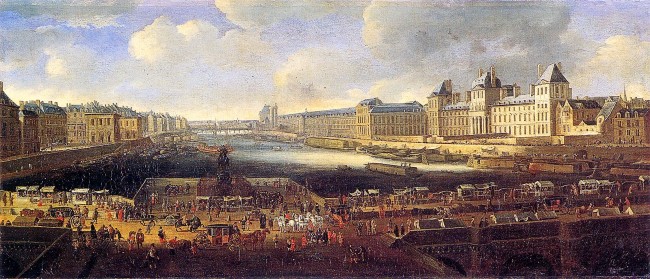
View of the Louvre Palace from the Pont Neuf – 17th-century French School. Public domain.
Gabrielle had real power. She ran a household of several hundred people, presided over life at the court and was frequently seen out with Henri, who often paused to caress her in public. He valued her advice and historians credit her with canny guidance during the religious wars which threatened his reign. She is thought to have persuaded him to renounce Protestantism for Catholicism, making him acceptable as the next king of France, and also then to have argued for the Edict of Nantes, which granted Protestants certain rights and made them more likely to accept Henri as king. Henri admired her diplomatic skills and wrote proudly that “my mistress has become an orator of unequalled brilliance.”
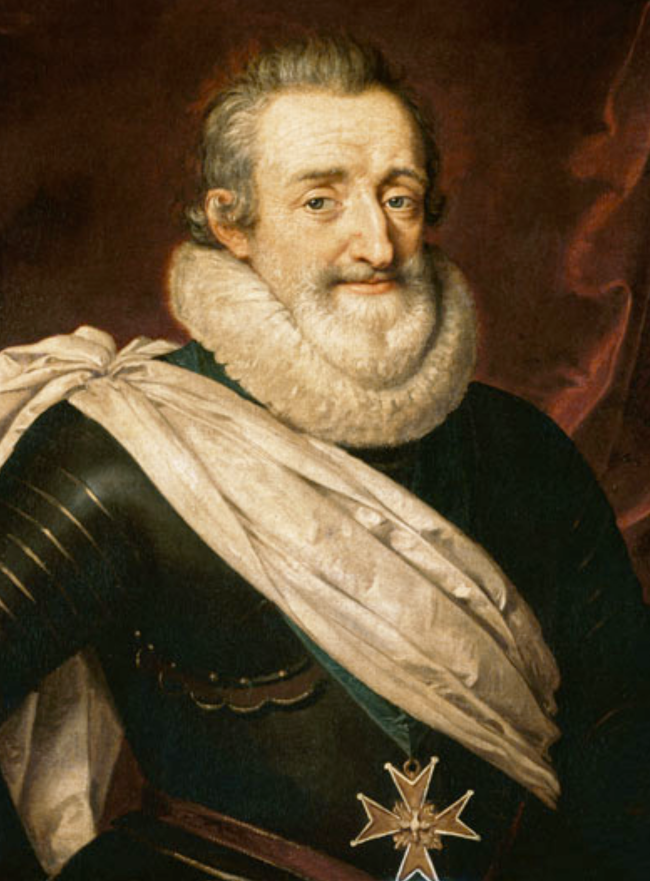
Portrait of King Henry IV of France, by Frans Pourbus le Jeune. Public domain.
But many of those at court resented her influence and the hierarchy of the hugely powerful catholic church looked on her with disdain. Pamphlets were circulated, referring to her as La Duchesse d’Ordure, the Duchess of Filth. There was public opposition to her too, and some of those watching Henri and Gabrielle pass through the streets were heard to call her “The King’s Whore.” When a cloth merchant, Jean Châtel, made a murder attempt on Henri, it was at Gabrielle’s apartments in the Louvre that he chose to strike. The knife attack left Henri with a scar on his face, and surely more aware of his unpopularity in certain quarters.
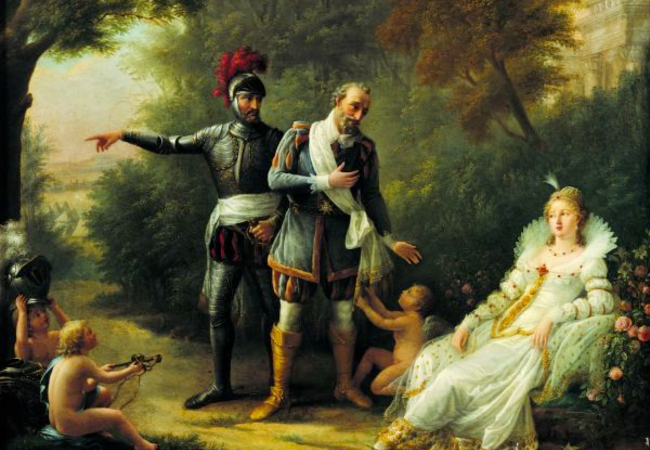
Henri IV quittant Gabrielle d’Estrées, painted by Mademoiselle Rivière, 1819
The year 1599 began happily, but then saw Gabrielle’s story end tragically. She was pregnant with their fourth child and Henri gave her his coronation ring to seal his promise to marry her. She is wearing it proudly in the painting. In fact, Henri was still pleading with the pope to grant an annulment of his first marriage, but Gabrielle felt so certain the wedding would go ahead that she said: “Only God or the king’s death could put an end to my good luck.” After giving birth to three healthy children, she probably didn’t feel a great foreboding about the next birth, but in fact it went horribly wrong. On April 10th that year, just days before a wedding planned for Easter Sunday, she died while giving birth to a stillborn son. She was 26.

Gabrielle d’Estrées. Portrait au crayon, by Daniel Dumoûtier in 1599. Public domain.
Henri was at Fontainbleau and did not arrive in time to see Gabrielle before she died. He was utterly grief-stricken. He wore black mourning clothes, something no French king had done before, and had a funeral worthy of a royal organized for her at Saint-Germain l’Auxerrois, the 13th-century church just opposite the Louvre in the first arrondissement. A procession of nobles and royal princes and princesses accompanied her coffin, including very probably some who had disdained her in life. She was buried at Maubuisson Abbey at St-Ouen-l’Aumône, now in the northern suburbs of Paris.

Saint-Germain-l’Auxerrois. Photo credit: Cmcmcm1 / Wikimedia Commons
Any death at such a young age is a tragedy, but some of Henri’s circle did not see it as such, for example courtiers who had been horrified by the king’s attempts to legitimize Gabrielle’s children. Conspiracy theories suggesting she had been poisoned further underlined the idea that some stood to gain from her death. Even Henri’s very real grief can be seen as short-lived. Within weeks he had a new teenage mistress, Henriette d’Entragues, and before a year had passed he had cast her aside and married Marie de Medici, many suspecting that her enormous wealth was an influential factor. By the end of 1600, Marie, not Gabrielle, was the new queen of France and the future mother of Henri’s heir, Louis XIII.
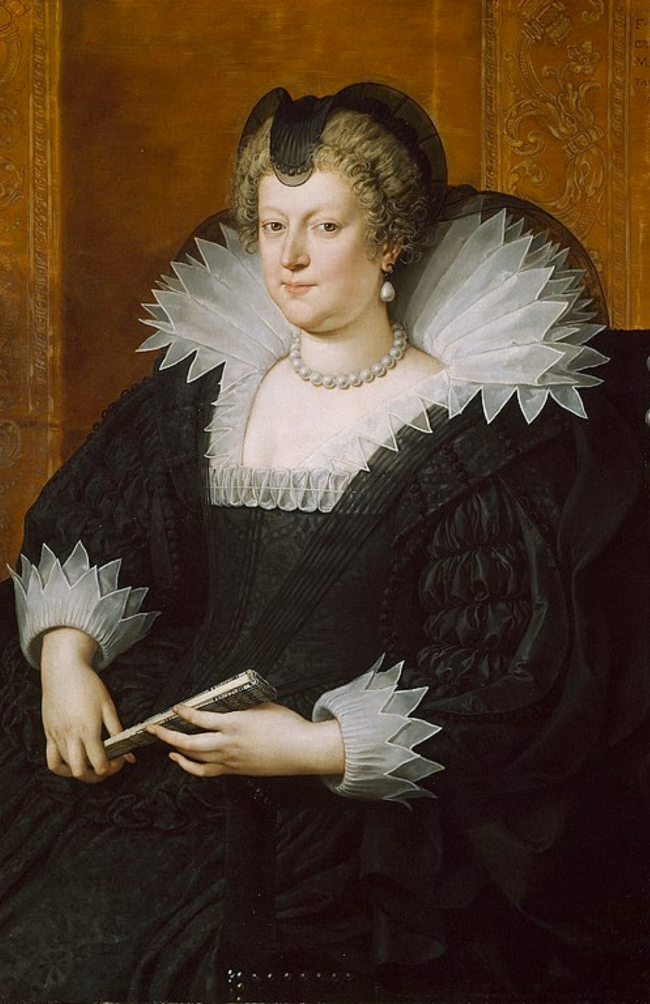
Portrait of Marie de Médicis by Frans Pourbus the Younger. Wikimedia Commons
The Gabrielle in the painting is at the height of her powers, doted on by the king of France and about to give birth to his child. At first glance it attracts amusement, but to know Gabrielle’s story is to look at the painting differently. Who hasn’t seen an old photo of someone in their prime and felt wistful knowing how their story ended? Paintings were the 16th-century equivalent of photos and this one, seemingly full of promise, is a precursor to the tragic story which unfolded in the life of La Belle Gabrielle. Yes, she was beautiful and Henri loved her. Despite the 50 or more sexual partners he is known to have had, she was the one he wanted to marry. Had she lived, she may well have been his queen and the mother of the heir to the throne. But it wasn’t to be.
Lead photo credit : Gabrielle d'Estrées et une de ses sœurs. Fontainebleau School. Public domain
More in Gabrielle d’Estrées, henri de navarre, King Henri IV, La Belle Gabrielle, mary queen of scots



REPLY
REPLY